Renovating your kitchen can be a great way to refresh the heart of your home, increase its value, and make it more functional for your family. It’s also an opportunity to express your personal style and create a space where meals, conversations, and everyday moments come together seamlessly.
However, renovations are often expensive, and without a clear plan, costs can quickly spiral out of control. Learning how to budget for a kitchen renovation is important to achieving your dream kitchen without breaking the bank. It's important to plan ahead, make informed decisions, and invest in high-quality materials that will last for years.
12 Steps To Make a Kitchen Renovation Budget
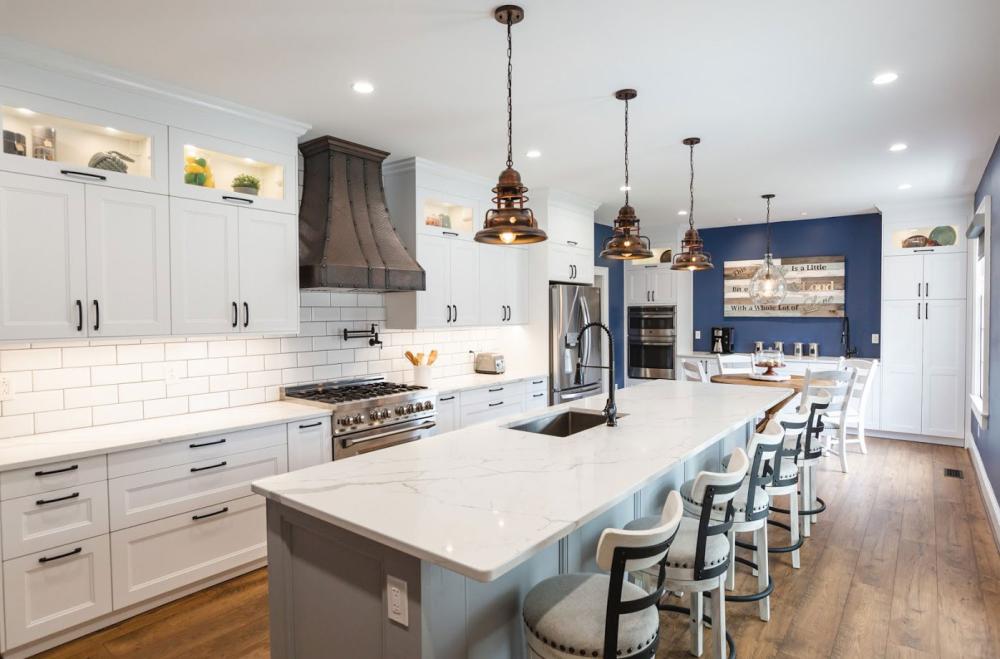
Creating a kitchen renovation budget is an important step in ensuring that your project stays on track financially. It helps you prioritize expenses, avoid unexpected costs, and ensure that your vision for the space is achievable within your financial limits. The following steps will guide you through the process of organizing your budget, from setting an overall price range to managing potential adjustments along the way.
Step 1: Set Your Goals and Priorities
The first step in figuring out how to budget for a kitchen renovation is to define your goals. Your answers to the following questions will help guide your spending priorities:
-
Are you updating an outdated space, increasing functionality, or designing a luxury dream kitchen for long-term use?
-
Do you plan to sell your home soon and want to increase its market value, or are you investing in your “forever kitchen”?
-
Do you want to do a kitchen renovation or remodel?
For example, if this is your forever home, you might justify the cost of high-end finishes and premium appliances. If you’re planning to sell within a few years, you might focus on upgrades that deliver the best return on investment. Clarity on your goals early in the process will help keep your budget aligned with your vision.
Step 2: Research Average Costs
Take time to research what kitchen remodels cost in your area. The total amount can vary significantly depending on where you live, the scope of the project, and the quality of materials.
Keep in mind that labor costs and material prices can fluctuate for many different reasons, so use current data from reputable online sources or local contractors. Understanding the average price range for similar projects in your area will help you build a more realistic and grounded budget.
Step 3: Review Your Financial Options
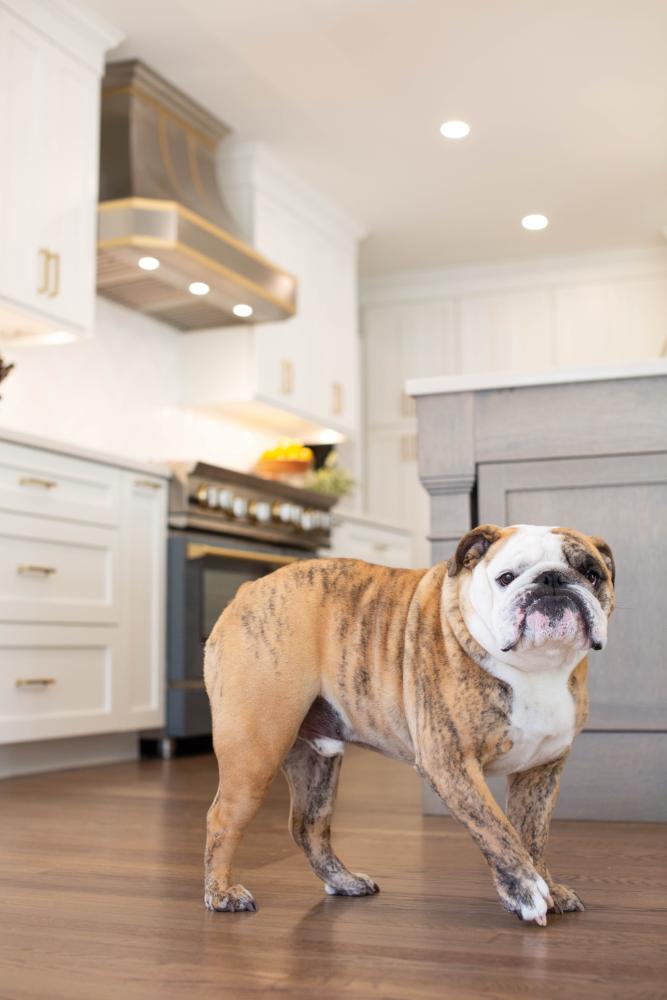
Once you have a good idea of the average costs, determine how much you’re able to spend. This figure should reflect your financial situation and renovation goals. Will you be paying out of pocket, using a home equity loan, or financing the remodel in another way?
By carefully reviewing your payment methods, the renovation becomes a manageable investment rather than a source of stress. It ensures that your kitchen renovation stays within your means from the start and aligns with your broader financial goals.
Step 4: Break Down Costs by Category
To build a comprehensive budget for a kitchen remodel, you’ll need to break it down into specific categories. This helps you set aside money in the right areas and avoid overspending in one area at the expense of another. Here’s a sample breakdown based on typical budget percentages:
-
Cabinetry and hardware: 30–35%
-
Labor and installation: 20–25%
-
Appliances: 15–20%
-
Countertops: 10–15%
-
Flooring: 5–10%
-
Lighting and electrical: 5%
-
Plumbing: 5%
-
Painting and finishes: 3–5%
-
Miscellaneous: 5%
This budget framework isn’t one-size-fits-all, but it gives you a helpful starting point to decide where your money should go. From there, you can adjust based on your priorities and preferences.
Step 5: Focus on Features That Matter Most
Every homeowner has different priorities when it comes to the kitchen. Some dream of professional-grade appliances, while others care more about custom cabinetry or high-end finishes. The key to building a smart renovation budget is deciding what matters the most to you.
Think about your lifestyle. If you cook daily and entertain often, investing in a custom bar sink and ample counter space will be worth the extra costs. If aesthetics are your primary focus, splurging on a designer backsplash or statement lighting could be the right move. By identifying your must-haves versus nice-to-haves, you can ensure that your money goes toward the features that truly enhance your space.
Step 6: Consider Hidden Costs
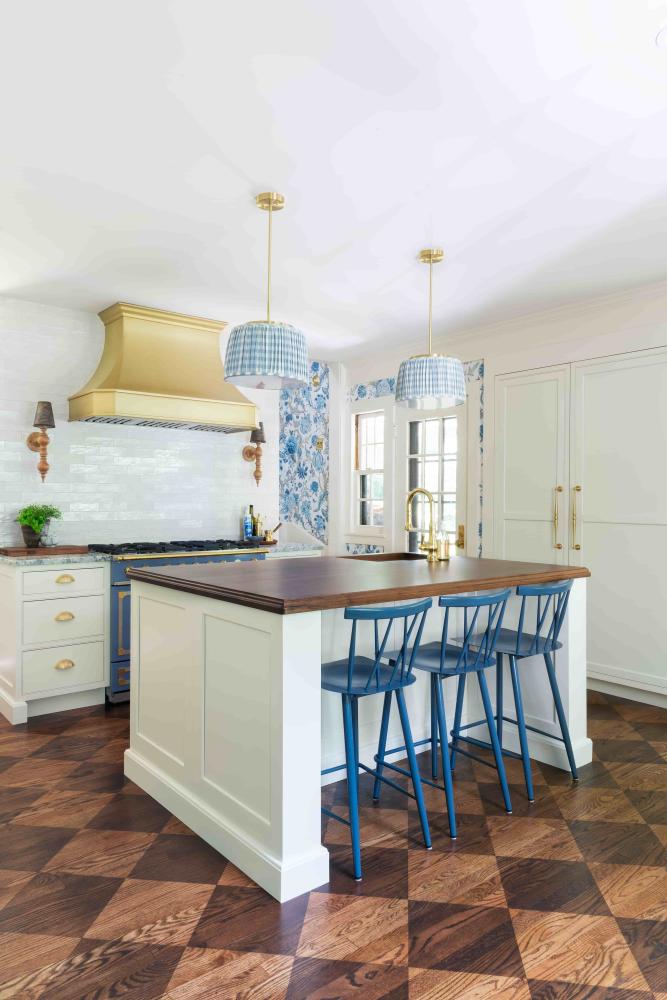
Even the most carefully planned kitchen renovation can come with surprises. That’s why it’s important to include a contingency fund in your budget, typically about 10% to 20% of your total renovation costs. This financial buffer helps you handle unexpected issues without derailing your entire project.
Common surprises include things like outdated electrical wiring, hidden water damage, pest infestations behind walls, or the need to bring your kitchen up to current building codes. You will also want to include permit fees, structural engineering consultations, and miscellaneous expenses in your budget.
You might also run into design changes mid-project, material shortages, or scheduling delays that require temporary adjustments, like eating out more often or staying in a hotel for a few nights.
Setting aside a contingency fund gives you flexibility and peace of mind. Instead of having to make rushed, last-minute decisions or dip into savings, you’ll be financially prepared to deal with whatever comes your way. If you don’t end up spending the full amount, you can reallocate those funds to a bonus upgrade, like custom furniture.
Step 7: Get More Than One Quote
To make the most of your budget, always gather multiple quotes from licensed contractors, designers, and suppliers. Ideally, you should get at least three bids to compare pricing, materials, timelines, and scope of work. Ask each contractor for detailed written estimates and check for credentials, references, and reviews.
Remember, the cheapest quote isn’t always the best choice. Pay attention to whether they use quality materials, communicate openly, and are professional. A slightly more expensive contractor with a solid track record and a clear kitchen remodel timeline may save you time and money in the long run by avoiding expensive errors and time delays.
When reviewing quotes, look closely at what’s included and what’s not. Some bids may appear lower but exclude essentials such as permits, demolition, or cleanup. Don’t be afraid to ask questions and clarify anything that’s unclear. Choosing the right contractor is one of the most important decisions in your renovation, so take the time to get it right.
Step 8: Track Expenses
Once your renovation begins, it’s important to keep a close eye on your expenses. Use tools like spreadsheets, budgeting software, or dedicated home renovation apps to track projected costs versus actual spending. Using these tools can help you manage receipts, payments, and invoices in one place.
Tracking your budget in real-time allows you to spot any overages early and make quick decisions to adjust. For example, if your flooring comes in under budget, you can reallocate those funds toward a lighting upgrade. Staying organized keeps your project and your finances on track.
Step 9: Keep Your Paperwork Organized
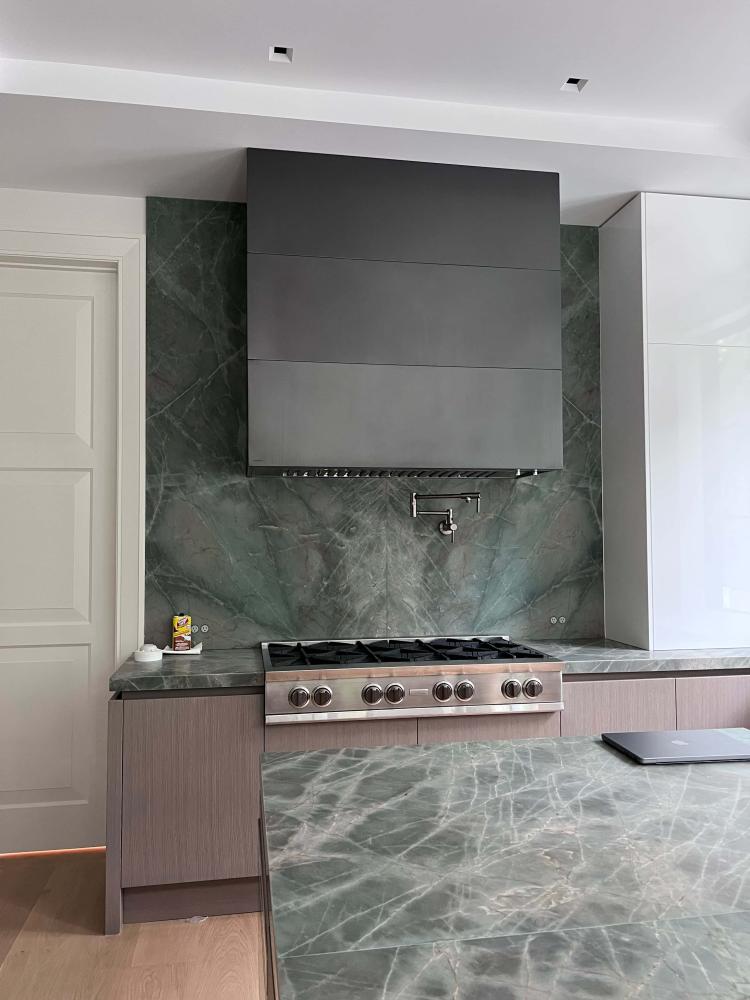
Disorganization can directly impact your renovation budget by causing unexpected and unnecessary expenses. For example, losing track of important receipts or contracts might mean you miss opportunities for refunds or warranty claims on faulty materials, which could have helped reduce your costs.
Additionally, without a clear record of your spending, you might accidentally overspend on supplies, leading to budget overruns. If delays occur due to disorganization, you could end up paying more and increasing the total cost of your renovation. Staying organized ensures that your budget remains accurate, controlled, and free from these costly mistakes.
Step 10: Know Where To Save and Where To Splurge
When planning a luxury kitchen remodel, striking the right balance between thoughtful savings and premium upgrades is key to creating a space that feels both elevated and functional. The idea isn’t to cut corners; it’s to spend where it counts. Investing in standout, custom pieces can dramatically enhance the look and feel of your kitchen, while smart savings on background elements help keep your budget in check.
Splurge on Show-Stopping Statement Pieces
In a high-end kitchen, splurge-worthy upgrades often double as design centerpieces. Consider investing in a custom range hood, a sculptural kitchen island, or handcrafted farmhouse sinks.
Incorporating copper sinks and metal kitchen accents brings elegance, texture, and character into any luxury kitchen. These aren’t just functional upgrades; they’re design elements that define the space.
Save on Supporting Materials Without Sacrificing Style
There are still smart ways to save without giving up on style. Opt for mid-range cabinetry boxes with custom fronts, or choose engineered wood flooring that mimics the look of wide-plank hardwood at a lower cost. Durable quartz countertops can offer a high-end look with lower maintenance than natural stone, allowing you to invest more in high-impact details such as handcrafted seating.
Focus Your Budget Where It Adds Lasting Value
If you’re working with a defined budget, prioritize luxury upgrades that will stand the test of time, such as a stunning copper sink or a bespoke pot filler that complements your cabinetry. These types of elements not only elevate the everyday experience but also add long-term value and appeal to your home.
Ultimately, a luxury kitchen is about more than expensive materials; it’s about creating a personalized, well-crafted space that reflects your style. Splurge intentionally on custom features that bring joy and functionality to your daily routine, and save strategically on elements that play a supporting role in the design.
Step 11: Be Flexible and Communicate Often
Even with a well-planned budget, things may not go exactly as expected. Materials can get delayed, costs can rise, and plans may need to change. The best way to handle this is with flexibility and open communication.
Stay in close contact with your contractor and be ready to make decisions quickly if something doesn’t go as planned. Regular check-ins and transparency will help you stay informed and allow you to make adjustments as needed. A flexible mindset will make the renovation process much smoother, and may even lead to creative solutions that improve your final result.
Step 12: Consider Accessible Home Design
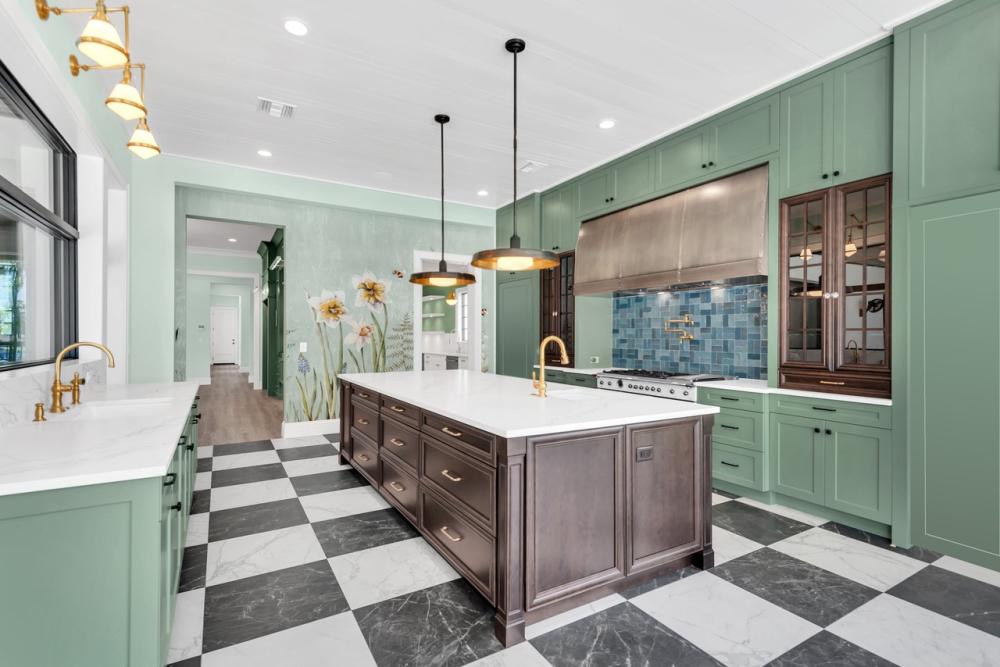
When budgeting for a kitchen renovation, it’s also worth thinking about accessibility, especially if you're designing a space for aging in place. Accessible home design makes the kitchen easier and safer for everyone to use, including children, seniors, and people with mobility challenges.
You don’t need to overhaul your vision to include accessible features. Simple, thoughtful choices like wider walkways, pull-out drawers instead of deep cabinets, lower countertop sections, touchless faucets, and strategically placed lighting can make a big difference. These updates often add minimal cost when planned early and may even reduce the need for costly changes later.
Including accessible features doesn’t just serve practical needs; it enhances the comfort and inclusivity of your kitchen. More and more homeowners are choosing accessible home design as a proactive investment in both lifestyle and long-term livability.
What Is a Realistic Budget for a Kitchen Remodel?
A mid-range kitchen remodel can fall anywhere between $30,000 and $70,000. For luxury renovations, especially those involving structural changes or top-tier finishes, the costs can exceed $100,000 and may even reach $200,000 or more.
Leave Room in Your Kitchen Renovation Budget for Luxury Finishes
A smart, realistic budget for a kitchen renovation helps you to prioritize what matters most, prepare for unexpected expenses, and enjoy luxury finishes that enhance both style and durability—all while increasing your home's value.
Ready to transform your kitchen? Contact CopperSmith today for expert guidance on selecting premium products that fit your budget and design goals.
